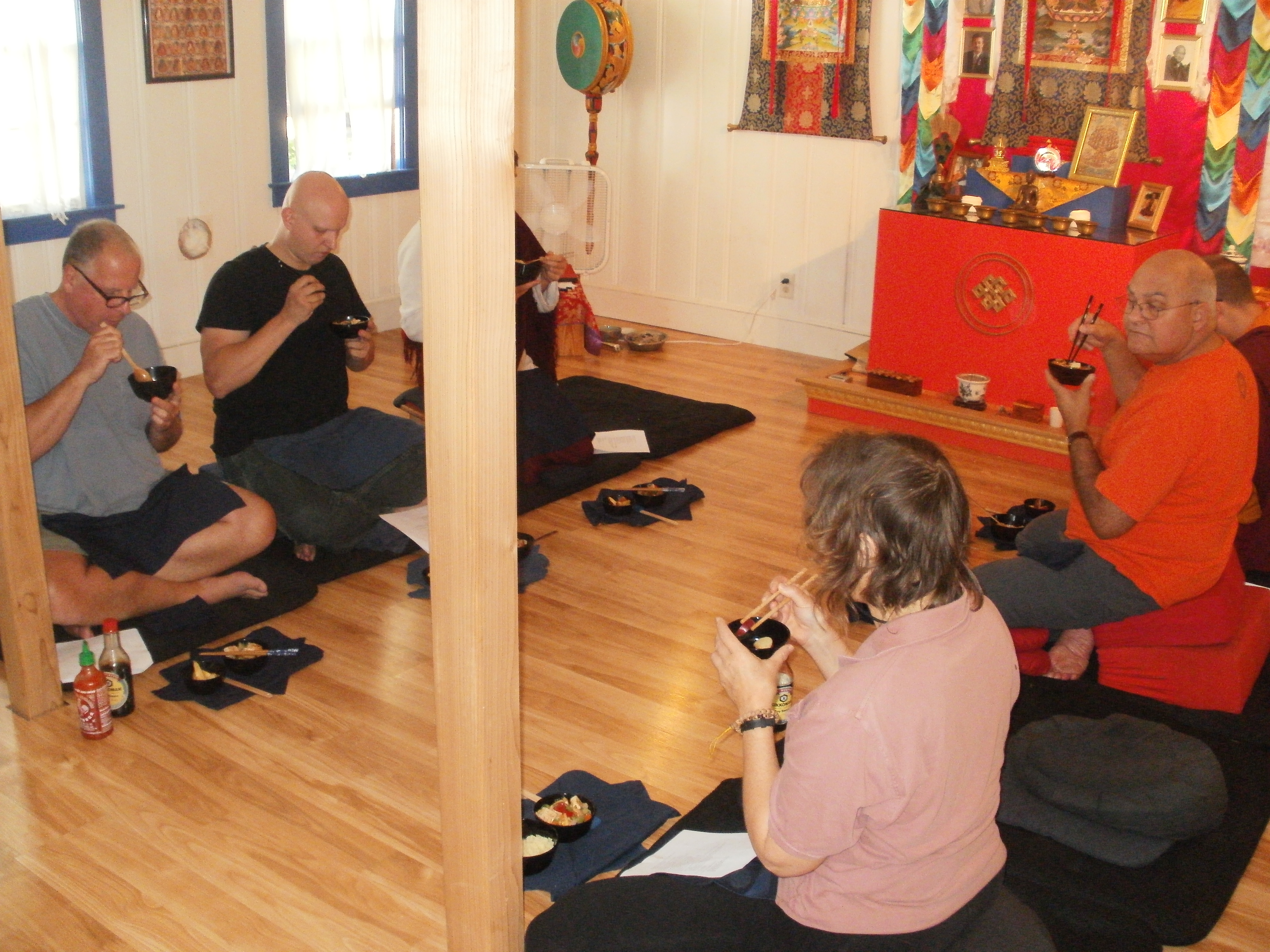
"What does it mean to join the Surmang Kagyu order?
I read the page, but what's a Ngakpa?
I googled it but hearing it from you would be more true, I think."
"Hi Skai,
Ngakpa— is essentially a tantric lay practitioner. What does that mean?
First, you aren’t a monastic— not a monk.
Tilopa, Naropa, Marpa, Milarepa— they were all nakpas. Dilgo Khyentse Rinpoche, Trungpa Rinpoche and Osel Tendzin were all nakpas.
What does it mean to be a Tantric Practitioner?
You are a disciple of a guru and a lineage— that is a continuous transmission. Mind transmission. It is referred to as a “mind transmission” because in the vajrayana there is something that you receive or recognize which we call “adhistana”— “jinlap.”
That is vajrayana language. It is the same realization the Tilopa had— and all the rest of them.. including the Buddha.
If you read the biographies of Marpa and Milarepa given by Trungpa Rinpoche or “The Rain of Wisdom” translated by him— you will get an idea of what this path is about.
Vajrayana is called “The Path of Skillful Means. — we go through a lot training and practice within the atmosphere of this lineage of transmission to recognize and then bind ourselves to this transmission. We recognize it as a particular quality. It is like walking into the shrine room here and noticing the atmosphere. That “atmosphere” is what we call jinlap. It is the vajra nature of your consciousness.
Tantric discipline follows “view, method and conduct.” These are embodied in a relationship between the vajra master and the disciple. Student is too weak of a word for this type of connection. Disciple.
Being a member of the Surmang Kagyu Order — one engages the gradual and sudden path to complete realization. We follow the path Trungpa Rinpoche established in America for people of our karma. That is the kagyu tantric path; the shambhala terma; or revealed teachings of terton— treasure finder— Trungpa Rinpoche— which is a Dzogchen thing.
Studying Trungpa Rinpoches pith oral instructions within the sacred atmosphere— the practice mandala— at DMC is really the method. The realization is “non reference point experience” which is the dharmakaya. And the view is the primordial ground— this present moment. Whether we consider that confused or enlightened.
To be a member of the Surmang Kagyu Order— which is something I made up and is not a legitimate thing at all— creates the boundary of discipline that allows you to enter properly the path to enlightenment."
The Surmang Kagyu Order is a ngakpa order founded by Tashi Armstrong to establish a means for people to both enter and follow to fruition the Kagyu, Nyingma and Shambhala path Chogyam Trungpa Rinpoche and the Vajra Regent developed for their western students.
What does becoming a member entail?
Becoming a member of the Surmang Kagyu Order entails making a commitment to the path Trungpa Rinpoche established for his students. Members progressively engage the Three Yana journey and take part in residential training at the Dzogchen Meditation Center several times during the course of the year.
Prospective members are asked to engage in several preliminary retreats before becoming members.
1.) A student must engage in a one month Dathun.
2.) He or She must commit to working with a Meditation Instructor in the Order.
3.) One must complete a 10 day solitary Shamatha/Vipashyana retreat
4.) Prospective students meet with Senior Instructors during a weekend intensive and request Entrance into the Order.
5.) They must commit to doing two intensives at DMC per year.
6.) Members are expected to commit to completion of a three month seminary work/study retreat where they will potentially receive preliminary vajrayana transmission. And begin the kagyu ngondro practices.
As a member of the Surmang Kagyu Order students receive discounts on retreats at the Center. Upon acceptance into the Order students receive their Oryoki Bowls and Robes signifying their membership in the Surmang Kagyu Order.


